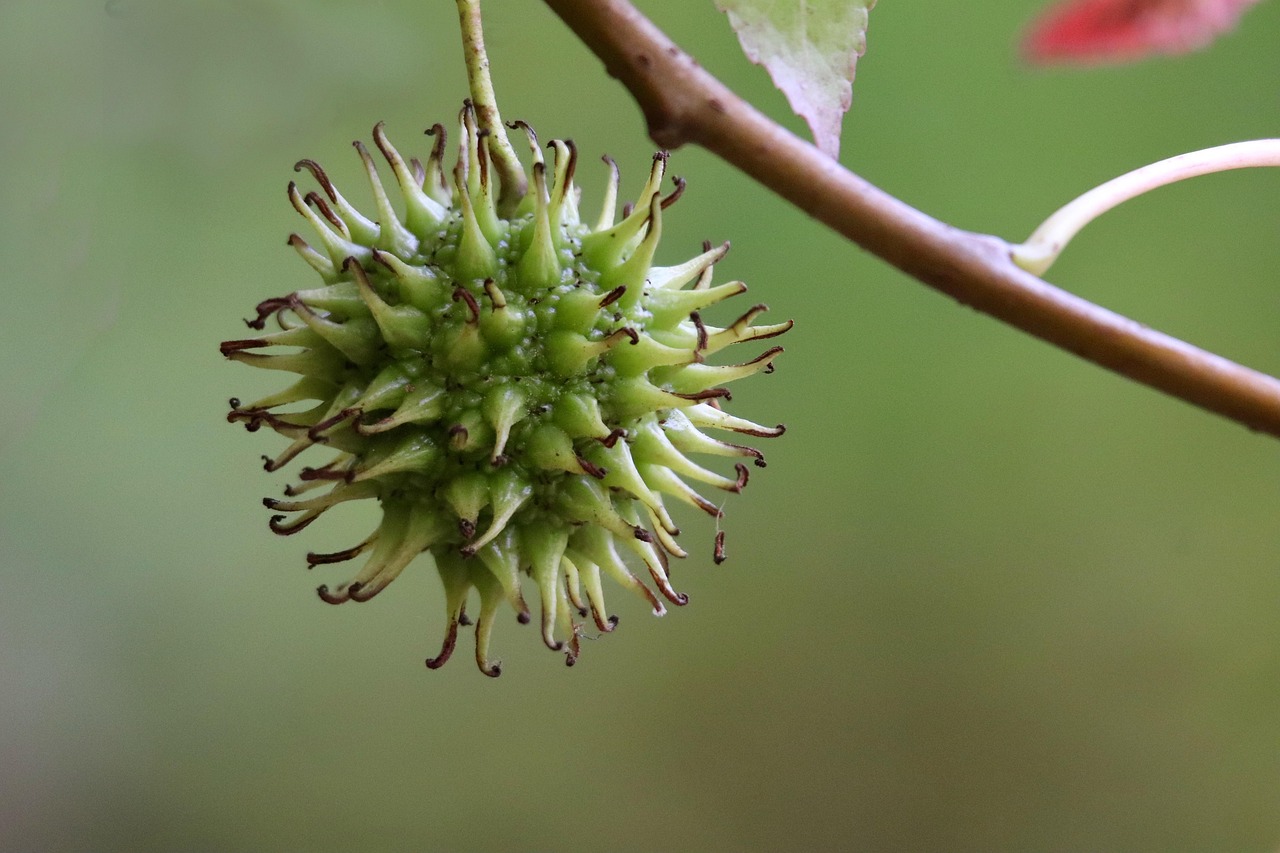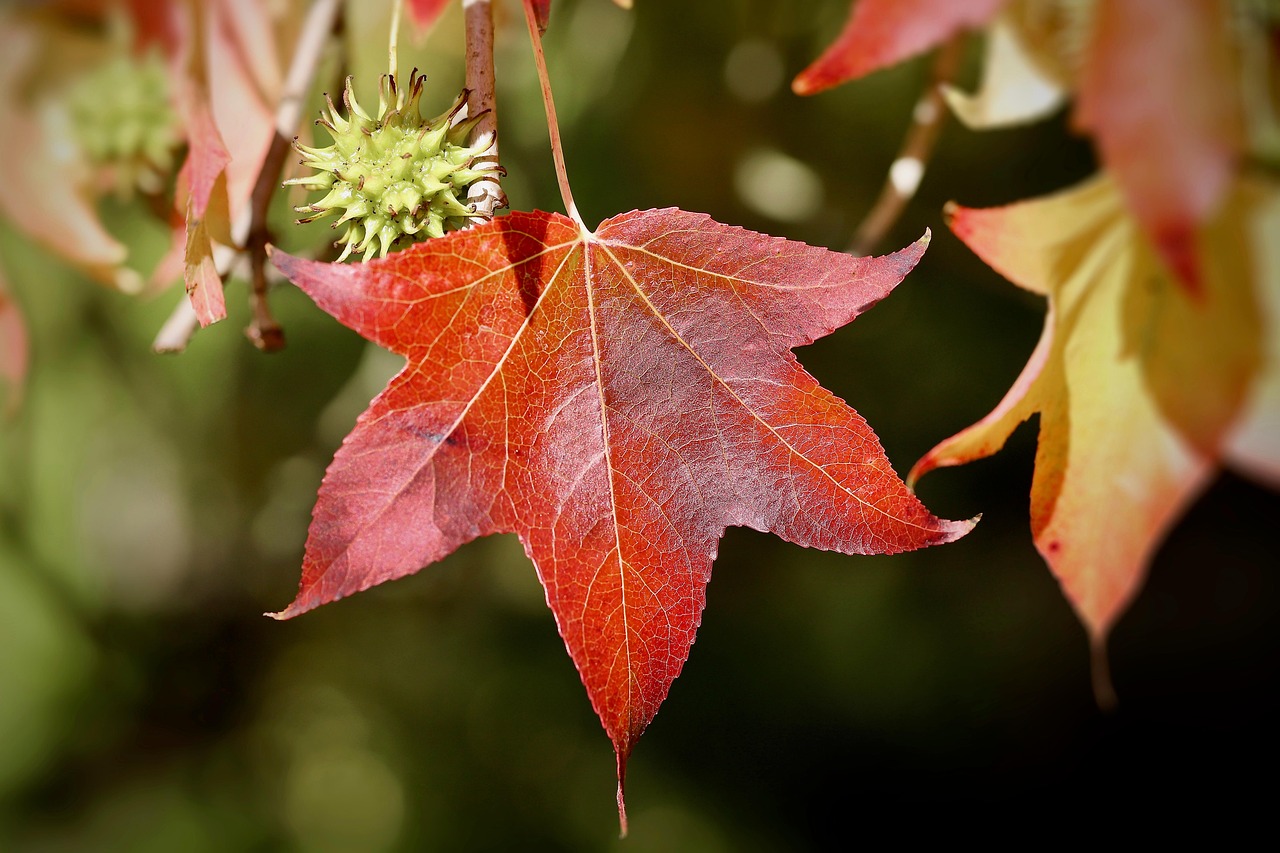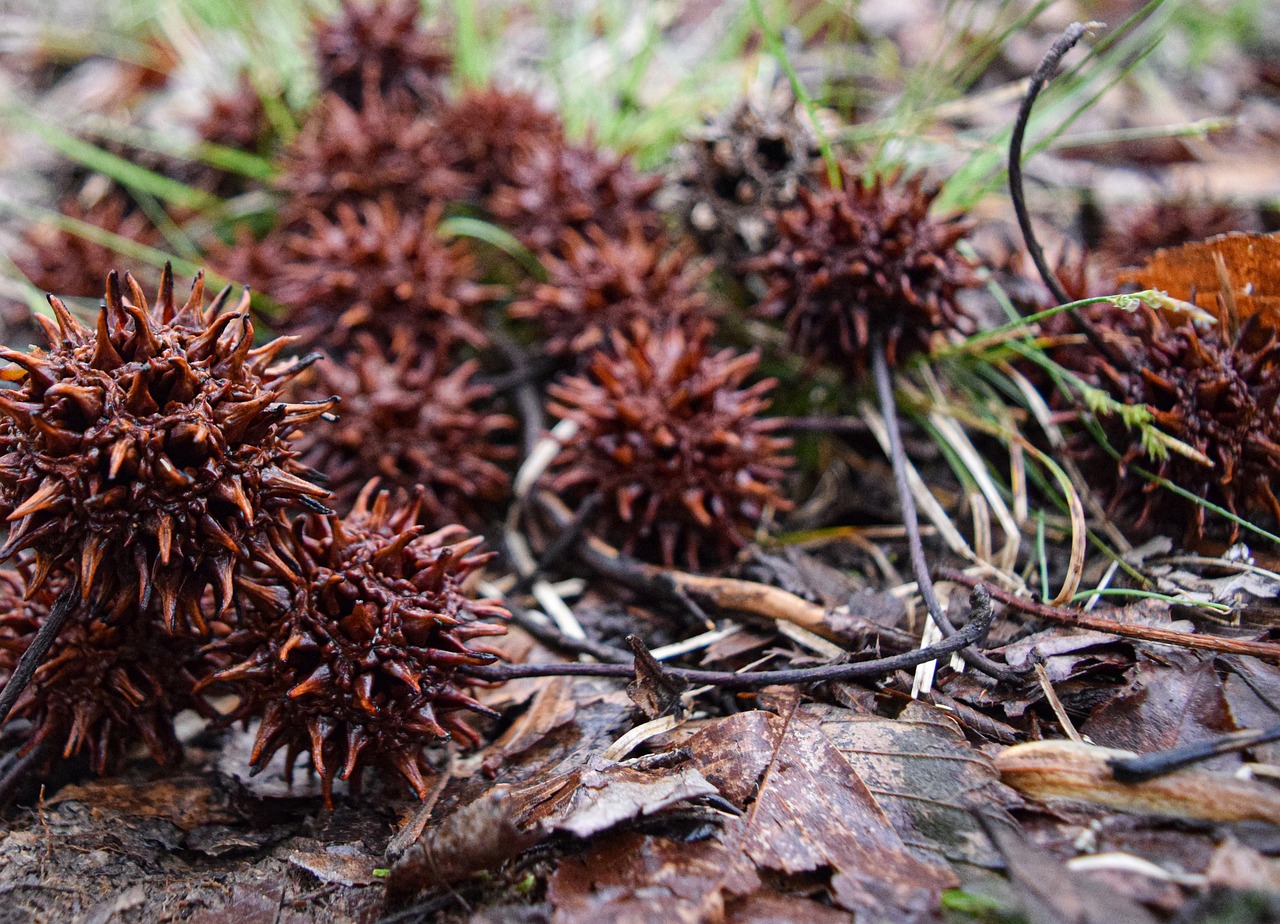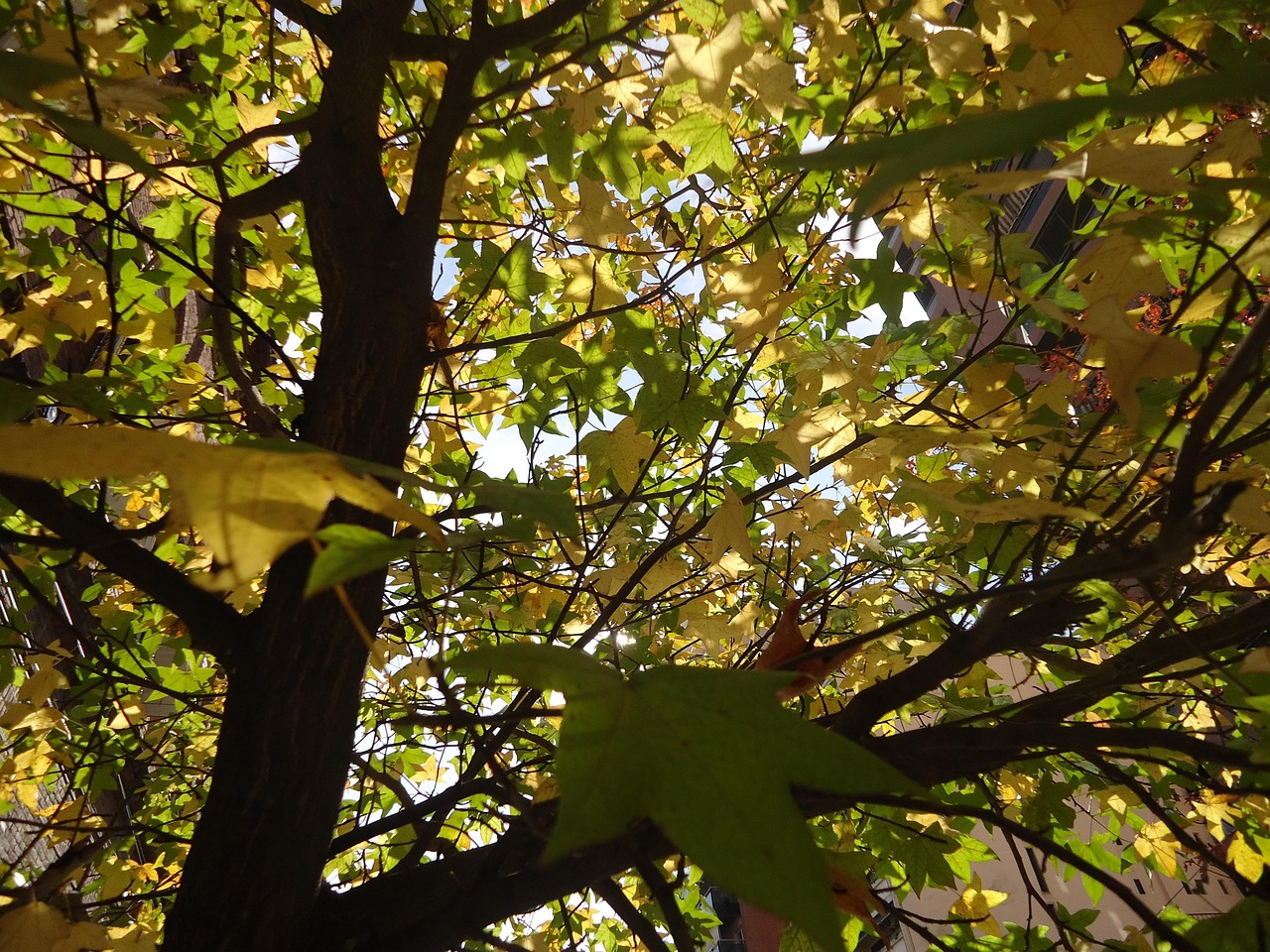The Sweetgum tree is valued for its various uses, including timber production, medicinal applications, and ornamental purposes. Its unique star-shaped leaves and gum resin have also been utilized in crafts and traditional remedies.
Introduction to the Sweetgum Tree

The Sweetgum tree, scientifically known as Liquidambar styraciflua, is a deciduous tree native to the southeastern United States. It is easily recognized by its distinctive star-shaped leaves, which turn vibrant colors in the fall. This tree can grow up to 100 feet tall and has a straight trunk that produces a high-quality hardwood. The Sweetgum tree thrives in wet, lowland areas but can also adapt to drier conditions.
Sweetgum wood is known for its durability and versatility, making it a popular choice for various applications. The tree’s resin, commonly referred to as gum, has also been used for medicinal and practical purposes throughout history. In addition to its practical uses, the Sweetgum tree serves as an important ecological component in its native habitat. It provides food and shelter for various wildlife species, contributing to biodiversity.
Common Uses of the Sweetgum Tree
The Sweetgum tree is admired not just for its aesthetic appeal but also for its practical applications. Below are some of the primary uses of this versatile tree:
- Timber Production: The wood of the Sweetgum tree is strong and resistant to warping. It is often used in furniture-making, cabinetry, and flooring.
- Gum Resin: The resin produced by the Sweetgum tree has been used in folk medicine and as a flavoring agent.
- Ornamental Use: Due to its beautiful foliage, the Sweetgum tree is frequently planted in parks and gardens.
- Wildlife Habitat: The tree provides food and shelter for birds and other animals, enhancing local ecosystems.
Timber Production
The timber from the Sweetgum tree is prized in the woodworking industry. Its fine grain and attractive appearance make it suitable for various products. The wood can be easily worked, finished, and stained, allowing for numerous design possibilities. It is commonly used for:
- Furniture
- Cabinetry
- Flooring
- Musical instruments
Medicinal Applications
The resin of the Sweetgum tree has a long history of use in traditional medicine. Native American tribes utilized this resin for its purported healing properties. Some common medicinal uses include:
- Treating coughs and respiratory issues
- Healing wounds and skin irritations
- Reducing inflammation
Modern herbalists continue to explore these traditional uses, promoting natural remedies derived from Sweetgum resin.
Ecological Importance
The Sweetgum tree plays a crucial role in maintaining ecological balance. It serves as a habitat for various species of birds and insects. Additionally, the fallen leaves provide nutrients to the soil, fostering growth in other plants.
Here is a summary of its ecological contributions:
| Contribution | Description |
|---|---|
| Wildlife Habitat | Provides food and shelter for various species. |
| Soil Enrichment | Fallen leaves contribute organic matter to the soil. |
| Carbon Sequestration | Helps reduce atmospheric carbon dioxide levels. |
The ecological benefits of the Sweetgum tree extend beyond its immediate environment. By supporting wildlife and improving soil quality, it contributes to the overall health of ecosystems where it grows.
Practical Uses of Sweetgum Wood
The Sweetgum tree is not only known for its ecological contributions but also for its practical uses in various industries. The wood harvested from the Sweetgum tree is versatile and can be used in numerous applications. Below are some of the key uses of Sweetgum wood.
Furniture Manufacturing
Sweetgum wood is widely utilized in furniture manufacturing due to its attractive grain and durability. The wood has a fine texture that can be easily finished, making it suitable for both contemporary and traditional designs. Some common furniture items made from Sweetgum wood include:
- Tables
- Chairs
- Cabinets
- Dressers
The natural resistance of Sweetgum wood to warping and splitting also makes it an ideal choice for high-quality furniture. Its ability to take stain and polish well enhances its appeal in the market.
Cabinetry and Woodwork
In addition to furniture, Sweetgum wood is frequently used in cabinetry and intricate woodwork. Its workability allows for precise cuts and details, which are essential for custom cabinetry. Craftsmen appreciate the wood for:
- Creating custom kitchen cabinets
- Building intricate moldings
- Designing built-in shelving units
The aesthetic qualities of Sweetgum wood add elegance to any interior space, making it a preferred choice among builders and homeowners alike.
Crafts and Decorative Uses
Beyond functional applications, Sweetgum wood is also popular in crafts and decorative arts. Its unique characteristics lend themselves well to various creative projects.
Ornamental Items
Sweetgum wood can be shaped into beautiful ornamental items. Artisans often use the wood to craft:
- Wooden bowls
- Sculptures
- Decorative boxes
The natural colors and grain patterns of Sweetgum wood enhance the beauty of these items, making them sought-after in craft markets.
Musical Instruments
Interestingly, Sweetgum wood is also used in the production of musical instruments. Its tonal qualities make it suitable for creating:
- Drum shells
- Guitar bodies
- Piano components
The sound quality produced by instruments made from Sweetgum wood is often praised for its warmth and resonance, adding a unique touch to musical performances.
Environmental Benefits of Sweetgum Trees
In addition to their practical uses, Sweetgum trees offer several environmental benefits that make them valuable in landscaping and urban planning.
Shade and Cooling Effects
The broad canopy of Sweetgum trees provides ample shade, making them ideal for parks, streetscapes, and residential areas. The shade helps reduce temperatures in urban environments, contributing to energy conservation by lowering air conditioning needs.
Soil Stabilization
The extensive root system of the Sweetgum tree aids in soil stabilization. This characteristic is particularly beneficial in areas prone to erosion. By planting Sweetgum trees, land managers can:
- Prevent soil erosion on slopes
- Enhance water retention in the soil
- Improve overall soil health
This stabilization can lead to healthier ecosystems and more sustainable land management practices.

Cultural Significance

The Sweetgum tree holds cultural significance in various communities. In some Native American cultures, the tree is seen as a symbol of strength and resilience. Its resin has been used not only for medicinal purposes but also in spiritual practices.
As awareness grows about the benefits of native plants, the Sweetgum tree continues to gain recognition for its contributions to both culture and ecology.
Challenges and Considerations in Sweetgum Tree Management
While the Sweetgum tree offers numerous benefits, it also presents certain challenges that landowners and urban planners must consider. Understanding these challenges is essential for effective management and sustainability.
Seed Dispersal and Maintenance
The Sweetgum tree produces spiky seed balls that can create a maintenance challenge. These seed balls fall to the ground and can cover lawns and pathways. The accumulation of these seed balls may lead to:
- Increased cleanup efforts for homeowners.
- Potential hazards for pedestrians, especially when wet.
- Competition with other plants, as the seeds can sprout in unwanted areas.
Regular maintenance, including raking and removing fallen seed balls, is necessary to manage these issues effectively.
Tree Allergies
Some individuals may experience allergies related to the Sweetgum tree. The pollen produced during the flowering season can trigger allergic reactions in sensitive people. Common symptoms include:
- Sneezing
- Runny or stuffy nose
- Itchy eyes
Landscapers should take these allergies into account when planning planting locations, particularly in residential areas where allergy sufferers may be present.
Sweetgum Tree Varieties
There are several varieties of the Sweetgum tree, each with unique characteristics that may suit different landscapes and uses. Understanding these varieties can help landowners select the most appropriate type for their needs.
Liquidambar styraciflua
This is the most common species of Sweetgum tree found in North America. It is known for its height, impressive canopy, and vibrant fall colors ranging from yellow to deep red. It thrives in humid environments and is often used in landscaping.
Liquidambar formosana
Also known as Chinese Sweetgum, this variety is native to East Asia. It is similar in appearance to its North American counterpart but tends to have a more compact growth habit. This variety is suitable for urban settings due to its adaptability to various soil types.
Liquidambar styraciflua ‘Rotundiloba’
This cultivar, known as the sweetgum or roundleaf sweetgum, features rounded leaves that differ from the typical star-shaped foliage. It has gained popularity for its unique appearance and is often used in ornamental landscaping.
Planting and Care for Sweetgum Trees
Proper planting and care are critical for ensuring the health and longevity of Sweetgum trees. Here are some guidelines for successful cultivation:
Site Selection
When planting Sweetgum trees, it is essential to choose an appropriate site. The following factors should be considered:
- Sunlight: Sweetgum trees thrive in full sun, requiring at least six hours of direct sunlight daily.
- Soil Type: They prefer well-drained soil rich in organic matter but can adapt to various soil conditions.
- Space: Ensure there is enough space for the tree to grow, as they can reach significant heights and widths.
Watering and Fertilization
Newly planted Sweetgum trees require regular watering to establish their root systems. Here are some tips for watering and fertilization:
- Water deeply once a week during dry periods.
- Avoid overwatering, as this can lead to root rot.
- A balanced fertilizer can be applied in early spring to promote healthy growth, following the manufacturer’s instructions.
Pest Management
Sweetgum trees can be susceptible to certain pests and diseases. Regular monitoring is crucial for identifying any potential issues early on. Common pests include:
- Aphids: These small insects can weaken the tree by feeding on sap.
- Scale insects: They may appear as bumps on the bark and can cause damage if left untreated.
- Leaf spot: This fungal disease can affect the leaves, leading to unsightly spots and premature leaf drop.
If you notice signs of pests or diseases, consult with a local arborist or extension service for appropriate treatment options.
Future Prospects for Sweetgum Trees
As environmental awareness increases, the Sweetgum tree is gaining attention for its potential contributions to sustainable practices. Its ecological benefits and versatile uses make it a valuable asset in both urban and rural landscapes. Here are some future prospects for Sweetgum trees.
Urban Forestry Initiatives
Many cities are adopting urban forestry initiatives to enhance green spaces and improve air quality. The Sweetgum tree can play a significant role in these efforts due to its:
- Shade provision: As cities become more populated, the need for shade trees grows. Sweetgum trees can help mitigate urban heat islands.
- Aesthetic appeal: With its striking fall colors, the Sweetgum tree enhances the beauty of urban landscapes, making public spaces more inviting.
- Wildlife support: Urban areas often lack habitats for wildlife. Planting Sweetgum trees can provide essential shelter and food sources for birds and insects.
Education and Community Engagement
Educational programs focusing on the Sweetgum tree can promote awareness of its ecological benefits and practical uses. Schools and community organizations can engage in:
- Tree planting events: Involving community members in planting Sweetgum trees fosters a sense of ownership and responsibility for local environments.
- Workshops: Teaching residents about the care and maintenance of Sweetgum trees can empower them to take action in their neighborhoods.
- Artistic projects: Utilizing Sweetgum wood in local crafts can create a connection between community members and their natural resources.
Environmental Restoration Projects

Sweetgum trees are also being considered for use in environmental restoration projects. Their ability to thrive in various soil types and conditions makes them suitable for:
- Reforestation: Planting Sweetgum trees in deforested areas can help restore ecosystems while providing habitat for wildlife.
- Erosion control: Their root systems stabilize soil, making them ideal for planting on slopes or along waterways.
- Wetland restoration: Sweetgum trees can thrive in wet areas, aiding in the restoration of wetlands that support diverse wildlife.
Conclusion
The Sweetgum tree exemplifies the intersection of beauty, utility, and ecological importance. Its diverse applications range from furniture making to environmental restoration, showcasing its versatility. As communities work toward sustainability, the Sweetgum tree serves as a reminder of the value found in native species.
By understanding its attributes and managing its challenges, we can make informed decisions about planting and caring for Sweetgum trees. Whether used for practical purposes or planted as part of urban forestry initiatives, this remarkable tree enriches our landscapes and ecosystems.
In conclusion, embracing the Sweetgum tree not only enhances our surroundings but also supports ecological health. As we move forward, continued education and community engagement will be vital in ensuring that this valuable species remains an integral part of our environment.
